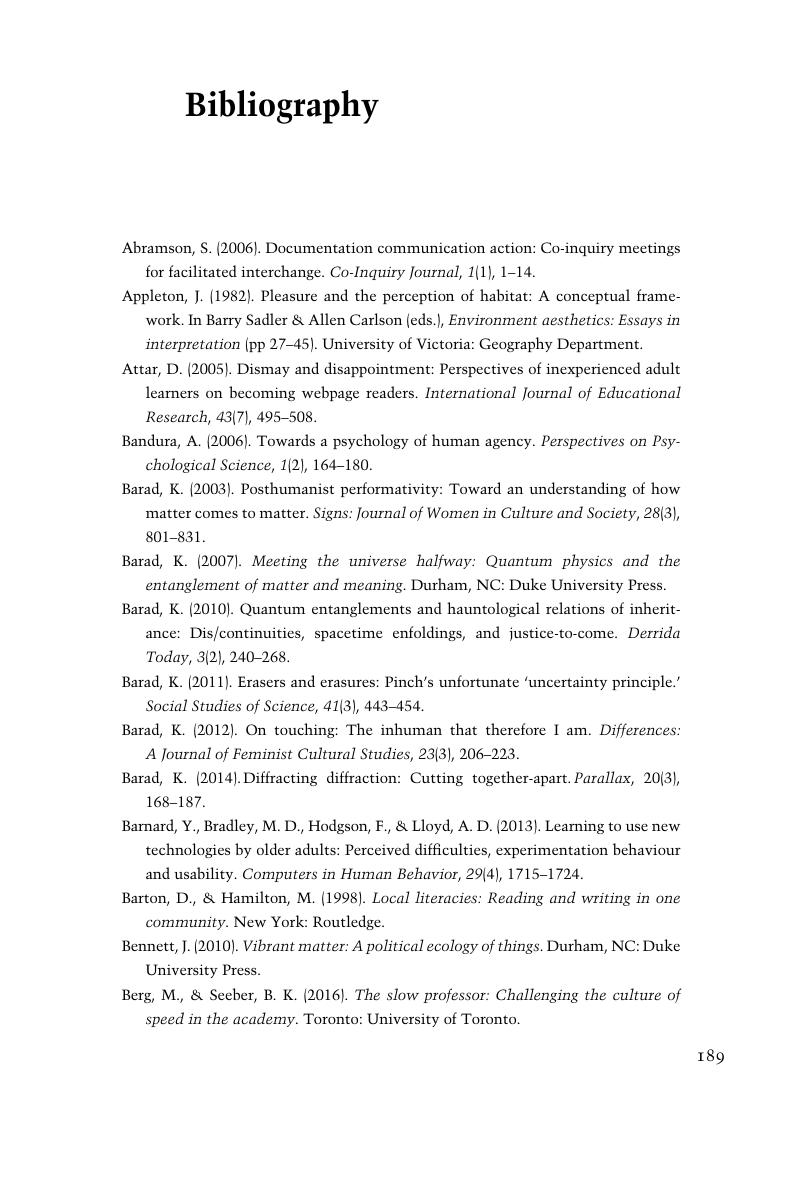Book contents
- Disrupting Boundaries in Education and Research
- Disrupting Boundaries in Education and Research
- Copyright page
- Contents
- Figures
- Prologue
- 1 Introduction
- 2 Materiality and Language Learning in Classrooms
- 3 ‘Poo Theatre’
- 4 Education as Instauration
- 5 Mathematics Learning as an Entanglement of Child, Concept and Technology
- 6 ‘I See You’re a Little Confused’
- Conclusion
- Bibliography
- Index
- References
Bibliography
Published online by Cambridge University Press: 30 August 2017
- Disrupting Boundaries in Education and Research
- Disrupting Boundaries in Education and Research
- Copyright page
- Contents
- Figures
- Prologue
- 1 Introduction
- 2 Materiality and Language Learning in Classrooms
- 3 ‘Poo Theatre’
- 4 Education as Instauration
- 5 Mathematics Learning as an Entanglement of Child, Concept and Technology
- 6 ‘I See You’re a Little Confused’
- Conclusion
- Bibliography
- Index
- References
Summary

- Type
- Chapter
- Information
- Disrupting Boundaries in Education and Research , pp. 189 - 200Publisher: Cambridge University PressPrint publication year: 2017

